English Civil War 1625-1649
Most significant cause: Charles did not rule according to the law 1625-1642

The reason I think that Charles not ruling according to the law is the most significant cause is because it is what I’d call the “root cause” what I mean is if he DID rule according to the law, he wouldn’t obtain money without Parliament’s consent, as well as the Grand Remonstrance (see image above) wouldn’t have been passed for it would have been unnecessary and because of that Charles wouldn’t have invaded the House of Commons, leaving that his advisers being unpopular, but that’s about it.
Most significant component 1: Solemn League and Covenant September 25 1643
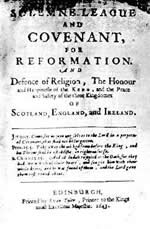
The Solemn League and Covenant was first proposed to the Scotts by Parliament for them to help Parliament against the king(Charles I) during the English civil war saying that Parliament will signed it if they help them but, some time later the king escapes and re-proposes it to the Scotts in order for them to help him, Charles I the very person they were fighting not to long ago but, being a king seemed to hold some importance over parliament in comparison to the king because they accepted to do so if he, Charles I, signed it.
Mot significant component 2: Battle of Naseby June 14 1645
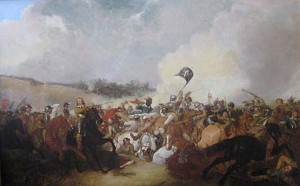
The Battle of Naseby was THE turning point of the civil war or essentially,the battle that won the (first part of the) war for Parliament because Charles’s forces were so defeated from that battle that Parliament might as well have won that day.
Most significant component 3: Charles I escapes December 1647
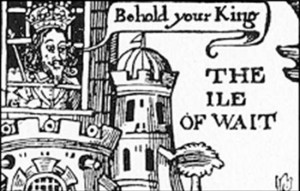
Charles I escaping is another important event because it starts the (short) second civil war, though Charles I didn’t really escape until he signed the “Engagement” which was more of a renamed “Solemn League and Covenant” agreeing that in order for the assistance of the Scotts, he (Charles I) would allow Presbyterianism into England which was also the agreement of the “Solemn League and Covenant” anyway, the Scotts agree and Charles’s army gets back up again! Only to be knocked back down.
Most significant consequence: Execution of Charles I January 30 1649
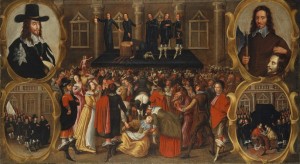
The execution of Charles I was a majorly significant event, the effect was immediate and lasted much longer along with a massive impact as well, especially seeing as how it’s an execution, Charles is dead, he’s not coming back afterwards.
Cromwell and the Republic 1649-1661
Most significant event 1: Instrument of government appoints Cromwell Lord Protector December 15 1653
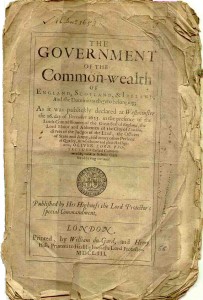
Imagine if Cromwell wasn’t assigned Lord Protector? It would definitely change things, for better or for worse would have definitely been the question though. This event also shaped the course of the events afterwards, seeing as how it would change a lot with the slightest change to this one. Now to talk about the event itself, basically, “The Instrument of Government” (see above) assigned Oliver Cromwell, Lord Protector (or Military Dictator) of England.
Most significant event 2: Blue Laws are imposed April 1655

The blue Laws were extremely strict laws about religious activities and the like. They prohibited Christmas, drinking, gambling, and a lot of other things that I forget. They were EXTREMELY unpopular with a lot of the English populace
Charles II and Restoration of the Monarchy 1661-1685
Most significant event: Parliament passes the Test Act January 1678

The Test Act was a law that prohibited Catholics from government positions because in order to get said position you will need to swear an oath that no Catholics would accept to do so, This law had such an impact that it effect on the reign of the next king.
James II and the Glorious Revolution 1685-1689
Most significant event 1: James II institutes a reign of terror – Bloody Assizes – against opponents June 1685
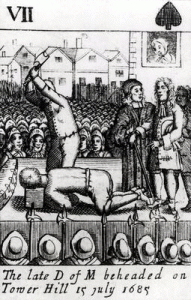
James started a reign of terror against the Duke of Monmouth and his supporters, the duke was an illegitimate son of Charles II and had come to try and claim the throne with good chances for he was a protestant but, was somewhat denied by parliament because they didn’t want a third civil war. Then he was executed some time later. This is quite significant seeing as how I don’t see ANYONE being happy about a Reign of Terror.
Most significant event 2: James II violates Test Act appointing Catholics to government positions November 1685

So, what happened here is that James tried to repeal the Test Act but Parliament disagreed with him and so, without Parliament’s approval, he began assigning governing positions to Catholics… hmm… without Parliament’s approval now does that sound familiar? That’s right! it’s like Charles I all over again! I think this was the trigger for Parliament to invite Mary and William over, seeing as how the Test Act was meant for them NOT to be surrounded by Catholics.